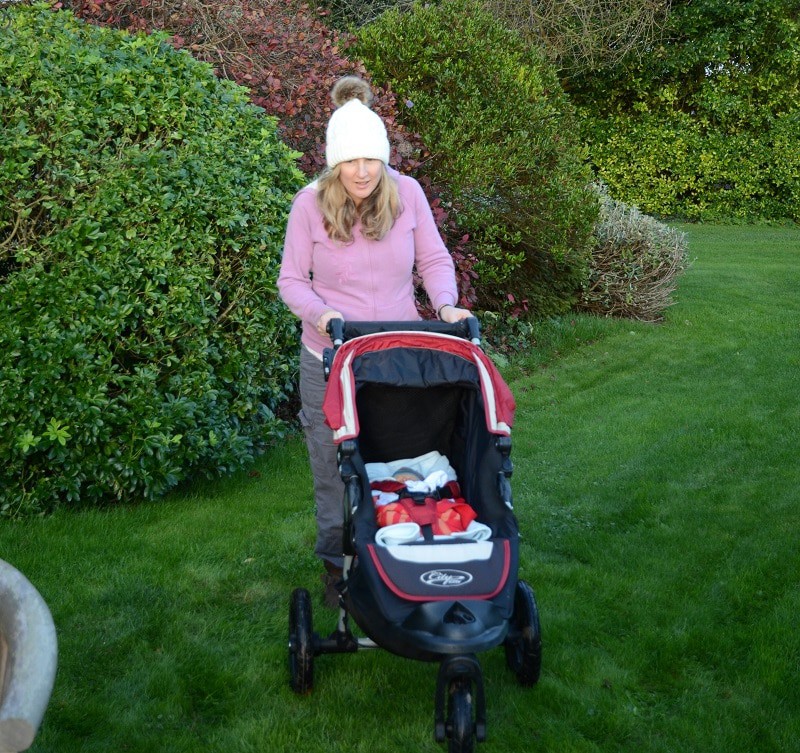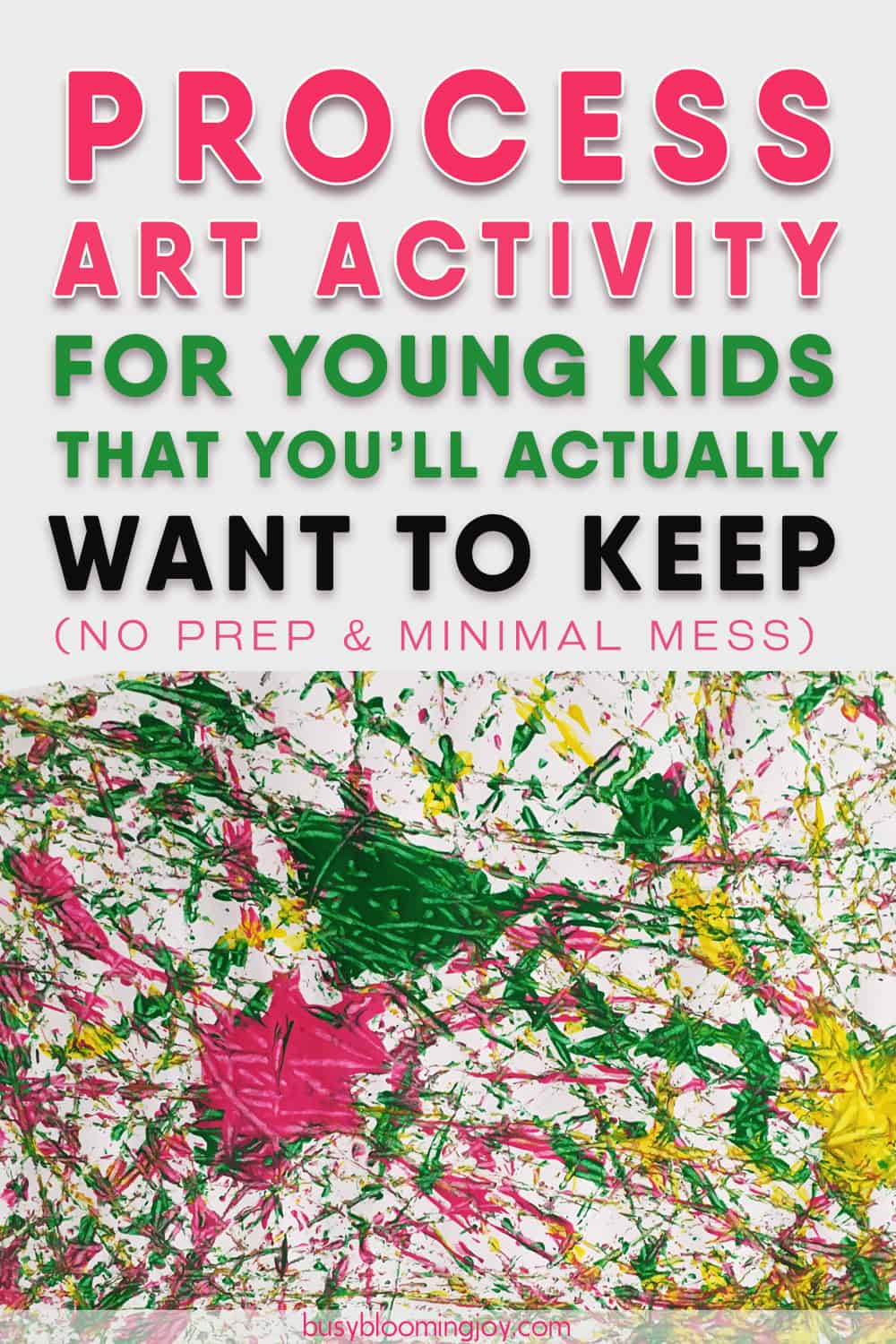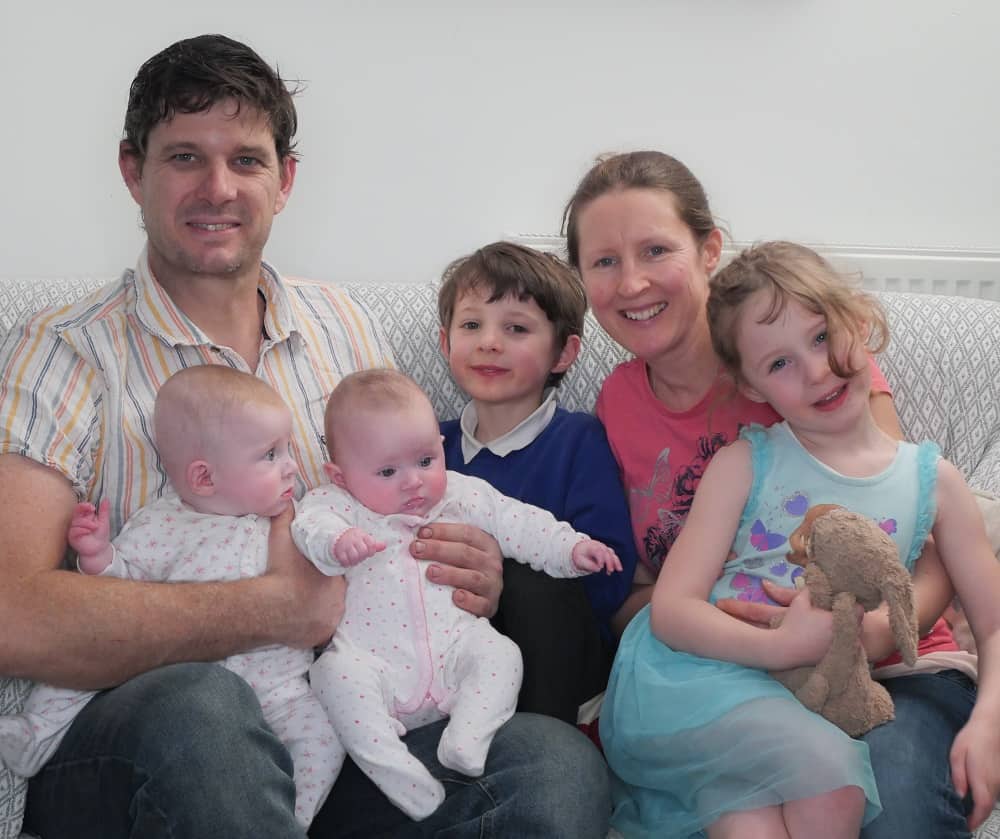Desperate for your baby to stop crying?
Desperate to get your baby to sleep?
Desperate to hear yourself think again?
If you’re reading this one-handed, crying baby in the other, I’m guessing you’re answering yes to at least one of the above.
So you need to know how to calm your baby.
Now.
Like, right now.
So let’s cut to the chase.
Table of Contents
ToggleSome precursors to a specific calming strategy
Just quickly, before we go headlong into exactly how to calm your baby, you need to do 2 things first:
1. Remove baby from excessive stimulation
Take your baby away from any bright lights, loud and irregular noises. It needs to be just you and baby. In a calm a place as possible.
On a side note, if you’re out and about and feeling the heat of everyone staring and you’re sure they’re judging your lack of baby calming skills then (1) they’re probably not and (2) even if they are, stuff ’em!
We’ve all been there and having a fussy baby is just one of those things that happens despite all our best attempts. It is NOT a reflection of your ability as a mother. Truth. Believe it!
But if you’ve got family milling around, a doting aunt who’s driven across the country to visit for the first time or a persistent mother-in-law who is determined she knows best, just because… that’s what some mothers-in-law are like (just mine?) then tell them to b*gger off kindly give yourself and your baby some space.
Very important.
2. Check all the normal things that might be bothering your baby
I.e. wet or dirty diaper, uncomfortable clothes, trapped wind, hunger, too hot or cold, illness…
If any of these are an issue it might be an easy fix.
The sensations your baby craves
So, when it comes to calming your baby, it pays to take a look at the world from their point of view, especially in view of the one they just came from (the warm, dark, coziness of inside you).
Stimulation from this strange new world can either pacify and calm baby down or excite and alert. In the early days, there’s way more opportunity for the latter.
There are just so many stimulating experiences, situations and sensations in the outside world for a newborn.
As if that isn’t hard enough, the thought is that baby would have done better with another few months in the womb. (Hence, the first 3 months of baby’s life or newborn phase is often termed the 4th trimester.)
Then there are a hundred gazillion other things that might be upsetting your baby…. (A quick look at figuring out exactly why your baby is crying will follow towards the end of this post.)
So, if your baby is fussy or crying, then you need to figure out the types of stimulation that will calm and soothe.
In a nutshell, you need to try and replicate the sensory experience your baby is most used to i.e. the touch, movement, visual, sound, taste and smell experience your baby experienced while in the womb.

Your newborn’s experience in the womb
Here’s an overview, sense by sense, including a summary of the type of sensations that will soothe, calm and pacify your baby.
TOUCH
Baby is enveloped in the warm and close confines of the womb. Complete freedom of arms and legs will feel very insecure to your newborn so calming and settling involves restricting this movement, with deep pressure touch.
(Periods of unrestricted movement are vital to promote healthy development but should be limited to awake/active periods when baby is happy and content. Wondering what the cues are for a baby that wants to play? Check out this baby cues post.)
Soothing touch: deep-touch pressure, especially to the back, at a comfortable temperature
MOVEMENT
Baby is constantly moved and rocked during pregnancy, with large movements when you’re moving about as well as much smaller movements 24/7, due to the regular waves of pressure from the diaphragm (as you breathe).
Soothing movement: gentle, rhythmical movements positioned on the front or side
VISUALS
There’s almost zero light exposure in the womb. This is why bright lights are so stimulating to a newborn.
Soothing on the eyes: low lighting, soft pastels and muted colors.
SOUND
Your heartbeat and gurgling, whooshing noises from inside the body. The volume level is said to be a little louder than a vacuum cleaner.
Soothing sounds: gentle, rhythmical sounds and the dull consistency of white noise.
TASTE & SMELL
Baby is used to the neutral smells and flavors of the amniotic fluid.
Soothing tastes: the sweet taste of breast or formula milk
Soothing smells: mom and mom’s milk (or before mom’s milk comes in, colostrum, the precursor to milk), the smell of dad or other regular caregivers as well as baby’s own smell and saliva
Finding your baby’s ‘calming reflex’ buttons
Calming and soothing your baby is all about replicating some of those womb-like sensations. So, most soothing techniques involve one or more of the following:
- rhythmic motion
- deep-pressure touch
- low-lighting
- regular/rhythmic noise
- holding baby close (for calming smell)
- feeding (but beware the ‘comfort feed’ – more on this later)
However, in order to quickly calm and soothe a very fussy and inconsolable baby you want to try and trigger the ‘calming reflex’. You need to find out where your baby’s on switch is hiding.
In the womb, this ‘calming reflex’ is almost continually switched on, with the specific combination of touch, sound, visuals, taste and smell, keeping your baby calm and fuss-free.
(You may notice how certain music you listen to or food or drinks you consume may get your baby in a bit of a tizz with a frenzy of activity and indignant kicks maybe – but will never reach the level of upset that you’re experiencing now.)
While you cannot replicate the womb exactly, using as many of the senses as possible, particularly touch and movement (which are highly developed in a newborn) and experimenting is the way to go.
It’s a case of finding the method that works for your baby.
7 things to try to calm your fussy baby
1. Dr. Karp’s 5s’s
Dr. Harvey Karp believes his specific calming method, the 5s’s, when carried out together and in a particular way should trigger baby’s calming reflex. It kind of sends baby into a trance, instantly calming baby and inducing sleep. (Really, it does work.)
Even just one of the S’s, alone, can be total game-changers for settling. But the real magic happens when they’re done altogether (there’s a video of Dr. Karp demonstrating further down.)

The 5s’s are as follows:
Swaddle
This is the most important ‘S’. Given that baby’s sense of touch is so well developed at birth, due to all the deep pressure touch they received in the womb, it’s no wonder.
Outside of the womb, remember that baby is going to feel completely lost with all that freedom. Swaddling restricts movement, creating deep pressure touch.
Then there’s the startle of ‘Moro’ reflex which all newborns have to battle with for a good 3 months…one of several newborn reflexes that ensures baby’s survival (although the Moro reflex is redundant now and a remnant of our tree-swinging days).
So swaddling is not only an essential settling tool but also prevents the Moro reflex from disturbing and waking baby, therefore encouraging longer sleeps too.
(Basically, swaddling is non-negotiable in the baby sleep stakes and one of the steps in this 10-step sleep strategy for getting baby to sleep through the night.)
This video gives a good demo on swaddling a plastic baby – makes it look easy but don’t be fooled. A wriggly, fussy newborn with a floppy head can be quite a different story.
Or for a written step-by-step with pictures, here’s a how to swaddle guide in pictures.
(Alternatively buy a fancy swaddle that does all the hard work for you – there are a tonne on the market and some great no-nonsense reviews, such as this one.)
Side or stomach position
Lying baby on her side (for example lying on your forearm) or stomach (lying over your shoulder) is much closer to the position baby was lying in when in the womb.
Generally, any position is more comfortable than lying baby on her back. Which is frustrating when it comes to baby sleep, since the most important safe sleep guideline is to sleep baby on her back… So if you calm and settle baby using side or stomach position if and when you put them down to sleep, you’re going to have to gently roll your baby onto her back.
Shush
This is all about replicating the type of noise AND the volume your little one was accustomed to in the womb.
You can say ‘shush, shush, shush’ loudly in baby’s ear. The alternative is to use white noise, but it has to be the right type of white noise:
- low-pitch (think the low, rumbly and monotonous drone of the car engine)
- loud (remember the sound level baby heard in the womb was louder than a vacuum cleaner) – think 60-75 dB.
White noise is not only an incredibly effective settling technique, helping baby to calm down and fall asleep, it’s also effective for helping baby to stay asleep. (Your newborn spends a lot of time in easily disturbed light sleep, so white noise drowns out background noises that might otherwise wake baby. You can read all about newborn sleep patterns and cycles here.)
So, incorporating white noise into your baby’s sleep environment is another one for longer sleeps.
If you google white noise machines you’re going to be spoilt for choice. So here are two options that come highly recommended (not affiliate links):
Or, if you’re a fan of free (who isn’t) youtube and many streaming services (e.g. Apple Music) have white noise specifically designed to calm and soothe babies – try this one from youtube. Just to remember to turn it up enough – think the level of a decent shower.
Swing
Dr. Karp claims that slow, gentle movements won’t be enough to calm a fussy baby, but small, quick movements will in a maneuver he calls the Jell-O head jiggle:
“For many babies, the Jell-O head jiggle is key to calming (quick little movements like a bobble head) To do it, always support the head/neck, keep your motions small; and move no more than 1 inch back and forth.”
Check the video coming up to see this in action.
Suck
Baby’s love to suck; the action of sucking is very soothing, but it’s a little baby dependent quite how effective this will be; some babies are very ‘sucky’, others not so much.
If you’re going to try as many of the 5 S’s together (you are, right?) then baby’s going to be sucking on a pacifier, since it’s not possible to feed AND do the Jell-O head jiggle. (Did I try? Me? Never…)
But a word of warning on using this 5th S in isolation, by feeding.

Beware the comfort feed
A breast or bottle-feed can work wonders for calming and soothing. And it’s not only for the sucking sensation. Feeding is normally accompanied by lots of other calming stimulation; being close to mom, dad or another regular caregiver provides calming touch and smell too.
BUT beware of feeding only for comfort – the so-called ‘comfort feed’. If you suspect that your baby may be upset due to gas pain and isn’t actually hungry, then more milk may only make matters worse.
You may also see your baby actively rooting and trying to suck, but beware! This isn’t only about hunger.
Rooting to suck is not only a cue for hunger, but also a sign that baby is either tired and overstimulated or has gut pain. Baby is trying to suck to seek comfort.
Related post: What the flip is my baby saying? 6 must-know BABY CUES & tips for responding effectively
Comfort feeding can put baby at risk of ‘digestive overload’ – it can, quite simply, overload your baby’s digestive system making any discomfort even worse. Combined with overtiredness and overstimulation, comfort feeding can even make your baby seem colicky or give your baby a touch of the witching hours… So if you’re looking for a colic remedy or to stop the witching hour, avoiding comfort feeding is essential.
So if baby’s rooting to suck or you want to try and soothe and settle her with a feed, beware and watch carefully. If feeding only makes her more distressed, uncomfortable and fussy, then stop. Try a pacifier instead or another form of comfort (starting with the other 4s’s).
Ok, went off on a bit of a tangent there, but that whole comfort feeding thing is an important point worth making.
More on how to avoid comfort feeding and why you should in this post here: Rooting to suck: is baby really hungry? And why you need to know
The 5s’s in action
Dr Karp demonstrates this method in this video clip below:
2. Babywear
Skin-to-skin (or kangaroo care), which is simply holding baby naked against your skin, is incredibly soothing and calming for a newborn.
You probably did a little skin-to-skin straight after birth and were perhaps encouraged to do this regularly with your baby back at home. There are a whole host of well-researched benefits of skin-to-skin to baby, from helping to regulate temperature to a stronger immune system.
From a calming perspective, it’s the calming touch and your familiar smell that your baby will love; it’s fantastic for bonding too (hint, get dad onto this!)
More on the benefits of skin-to-skin from Sanford Health here.
Babywearing just adds another dimension to skin-to-skin. You’re adding in soothing and calming motion plus deep pressure touch.
When baby is small, say birth to 3 months, a ‘baby wrap’ is the way to go. Essentially a very, very long strip of stretchy material that is a pain in the butt to tie up (it takes a bit of practice), but once on it can be a complete game-changer and very rapidly calm your little one.
My favorite baby wrap here (not an affiliate link) and a video tutorial on how to tie it here.
At a later stage you can then upgrade to more of a ‘carrier’ which is a bit more structured (so easier to get on and off but has a higher price tag.)
My favorite baby carrier here (not an affiliate link). No video tutorial necessary.
So pop your newborn in the wrap (it might be more like ‘wrestling’ rather than ‘popping’ if your if baby is in a state and you’re not yet well-practiced at putting that darn wrap on…) and start pounding up and down the hallway, streets, stairs or your back yard.
Babywearing also works well in conjunction with an exercise ball; all that rhythmic bouncing while wrapped up tightly to your chest is sure to settle your little one.
Hopefully, it won’t take long for your baby to calm down. In fact, this is such an effective calming strategy that you’re probably going to find your baby falling asleep not long after calming down.
One word of warning on baby wearing
Beware if you don’t want baby to sleep all day long (hint: you don’t, since that’s an invitation for baby to be up all night…)
Remember to take baby out at some point and let her wake up naturally. Or wake baby up. (Yes, you read that correctly. Key to reversing any day-night confusion and getting baby to sleep longer periods of night, is to wake baby up in the day.)

3. Get outside
This is one of my favorites because not only did it instantly calm my baby, it did me the world of good too. (Trying to calm a crying baby is incredibly exhausting, frustrating and upsetting, right? So a change of scene and some fresh air can help all those things…)
So strap your baby in the buggy, grab your shoes etc and get walking.
The regular movement sensation of the buggy, particularly on a slightly rougher pathway is first choice. The small vibratey-type sensations are similar to the Jell-o head jiggle of Dr. Karp’s 5s’s. This is also normally accompanied by some kind of rhythmic rattly noise, depending on how rattly your buggy is.
This can work well with either a car seat attached to the buggy or a bassinet clipped to the buggy, dependent on the route you went. If you chose the latter, swaddle baby first to restrict movement, which can add to the distress, and to add-in that deep pressure touch.
You may also need to shield baby from direct sunlight – also remembering that the dark can be soothing. So if you can fully and safely cover the buggy, that’s first prize. (I used a snoozeshade – apologies I cannot find this on Amazon right now, probably due to Covid-19. You can just use clip a baby blanket to your buggy with clothespins.)
But if not, watching the world go by can also help calm. Passing trees and leaves wafting gently in the breeze can also have a bit of a hypnotic affect.
4. Distract, distract, distract
For this one, my dad has to get a mention. He was not very useful when it came to the whole baby thing, like most grandfathers I should think. But where he came into his own was coming up with random distraction tactics.
I know I said to remove from excessive stimulation and from other family or friends but my dad was a relatively familiar face to my babies. (We live in the sticks in the African bush a looooong way from a good hospital so, or birth and much of the newborn phase), I decamped to my parents in the UK.)
So my dad’s tactic of choice was baby aerobics. Sadly I don’t have a picture – I think I was always so gobsmacked that this had any effect which, combined with serious mommy brain, meant I never captured anything on camera.
But basically, my dad would sit down on the sofa as in the picture below: feet resting on a stool or the side of the table, so his legs were on an incline, then lie baby on the incline in the groove of his legs.

Then he’d hold baby’s hands and simply cross her arms to the opposite side rhythmically, doing some kind of random chant and grinning like a madman.
It worked. Not every time, but enough times!
Other distraction tactics that might help:
Turn a tap on and let baby watch the water running – calming sound and visuals
Take baby to a mirror to look at herself or show her some pictures of other babies or your own family – babies love to look at faces
Take your newborn to a dark room or turn the lights out and create a light show using a torch – or buy a light show for your baby. These are great to use when your baby’s falling asleep and can then be used as a nightlight when older.
(I’ve got this baby monitor which also has a light show – still in use every night nearly 5 years later, the light show now acts as a nightlight.)
5. The Colic Carry (or Tiger In The Tree)
This is a comfortable front lying position for baby – so a specific version of Dr. Karp’s second ‘S’ (side or stomach settling). It’s particularly good if baby is gassy, got trapped wind or lower gas pain and crying inconsolably, i.e. is colicky, hence the term ‘colic carry’.
Related posts:
- Colic: what is it & is crying really inconsolable? Plus causes & remedies (yes, there ARE some)
- Got a gassy baby? 16 Common causes & remedies to fix them for good
It’s a very simple and stable hold; you lie baby over your forearm, with her head towards your elbow and your hand supporting her crotch. The gentle pressure on the abdomen helps to expel any trapped wind.
You can also add in some movement sensation by a brisk stroll around the house or put on some music and have a little dance….

6. Put some tunes on and dance
Turn your lounge into a dance floor, get baby into a comfortable hold and put some music on. This is another great mom calmer too. Nothing like some good tunes to de-frazzle you.
In terms of how to hold baby, it’s a case of whatever works for you. The colic carry was my go-to with my second born, a terribly gassy baby. My first-born, only really got frantic when overtired so any hold would do. So I either cradled him in the crook of my arm, just as if I was going to do rock-a-bye baby, or held him face in towards my chest, with a hand firmly on his back.
Then pick some music and get moving. Sway gently to some classical music (babies seem to love classical music) or try something more upbeat.
Experiment and see what your baby likes – you’d be surprised how differently they can react to different types and tunes… (My firstborn loved Michael Jackson. Okay, I admit it, it was me but he didn’t object…)
If there’s any music you listened to while pregnant that’s definitely worth a try – baby’s have a good memory for sounds. Hearing the same music baby heard when in the womb can be calming and reassuring.
Stuck for dance moves? I love these dance ideas from Ask Dr Sears.
7. The hairdresser trick
Some say that bathing a baby can calm and soothe but…. while I do believe bathtime is an essential ingredient to any good bedtime routine, it’s not for when baby is wound up good and properly. In this instance, a bath is a total nightmare and can do more damage than good….
Legs and arms flailing everywhere as you desperately try not to drop your frantic baby all the way into the water. Then you’ve got to get baby out and dress them – another invitation for more tears with the slightest waft of cool air on the bum or a stubborn arm getting lost in those ridiculously fiddly clothes…
So this one uses the calming element of bathing – the warm water and the sound of running water – in a far more effective way, because baby is fully dressed and swaddled.
All you need is a sink with a mixer tap, so you can get the temperature just right.
Then you’re going to be the hairdresser giving your baby a hair wash. Hear me out, I’m not crazy, really.
So, baby is all wrapped up in a nice neat swaddle – this should start calming right away of course. Turn on the tap and get the water to a comfortable temperature – exactly the same as if you were bathing her (that’s 100 F or 37-38 C if you want to check with a thermometer).
Now, hold baby horizontal lying on her back along your left arm, if you’re right-handed. Put her head over the sink nearish the tap and start to wet her head with water. Once her hair is a little wet you can put her head a little under the water.
Let the warm water wash over your baby’s head and hair and keep stroking the hair and scalp down with the water.
Your baby will love the sensation of the water washing over her hair along with the sound of the running water, all while snug and secure in her swaddle.
Then, once calm and a bit happier, you now have no drying or dressing to do.
Winner.
What to do next
Once your newborn is a little calmer and happier (and possibly asleep), next step is figuring out the cause of all the upset. So you can avoid it next time if possible.
Often the issue is overtiredness and overstimulation – the symptoms are very similar to gas pains and discomfort. So make sure not to keep your newborn awake too long (up to 3 months most newborns can’t stay awake longer than 2 hours max.)
More on figuring out exactly how long your baby can stay awake in this baby awake times post.
Perhaps your baby is very gassy. This could well be the case if your baby hasn’t been awake too long (i.e. isn’t overtired) and is arching her back, curling into the fetal position, clenching fists and is grimacing or red-faced.
If so check out this post: Got a gassy baby? 16 Common causes & remedies to fix them for good

Maybe your newborn is spitting up a lot or screaming out in pain.
If so, check out this post: The scoop on REFLUX REMEDIES: natural remedies, over-the-counter ones & prescribed medications
If baby is only upset in the late afternoon or evening (or both) then it could well be the witching hour.
Check out this post: Got a ‘Witching Hour Baby’ on your hands? 7 steps to end evening fussiness for good
Not sure what was up with baby?
If only baby’s could talk, right?!
Figuring out what they need is no easy task. You need to learn your baby’s cues – the unique signals he or she uses to communicate. There are subtle differences between all those different body, face, hand and mouth movements. Then there are the sounds your baby makes. All should give you clues as to what exactly is up.
The 6 newborn baby cues are:
- Baby cues for hunger: “FEED ME”
- Baby cues for seeking engagement: “PLAY WITH ME!”
- Tiredness & overstimulation baby cues: “I NEED A BREAK, I NEED TO SLEEP”
- Trapped wind baby cues: “I NEED TO BURP”
- Baby cues for gut pain: “I HAVE A LOT OF DISCOMFORT & PAIN IN MY GUT”
- Baby cues for discomfort: “I’M COMFORTABLE/SOMETHING IS IRRITATING”
The key is to spot the early warning signs and act accordingly. The longer your baby’s needs are not met, the more upset she will become and the harder it becomes to know what’s wrong and therefore how to console her.
For a detailed overview of all 6 baby cues check out this post: What the flip is my baby saying? 6 must-know BABY CUES & tips for responding effectively
Wrapping up
I’m so hoping one of these calming strategies will have helped you soothe your baby and given you both some much-needed peace.
It’s not easy, I know. My thoughts are truly with you as you struggle with your fussy baby. I’ve been there. But you got this.
Please let me know if you have any questions.
Good luck and you go girl.













